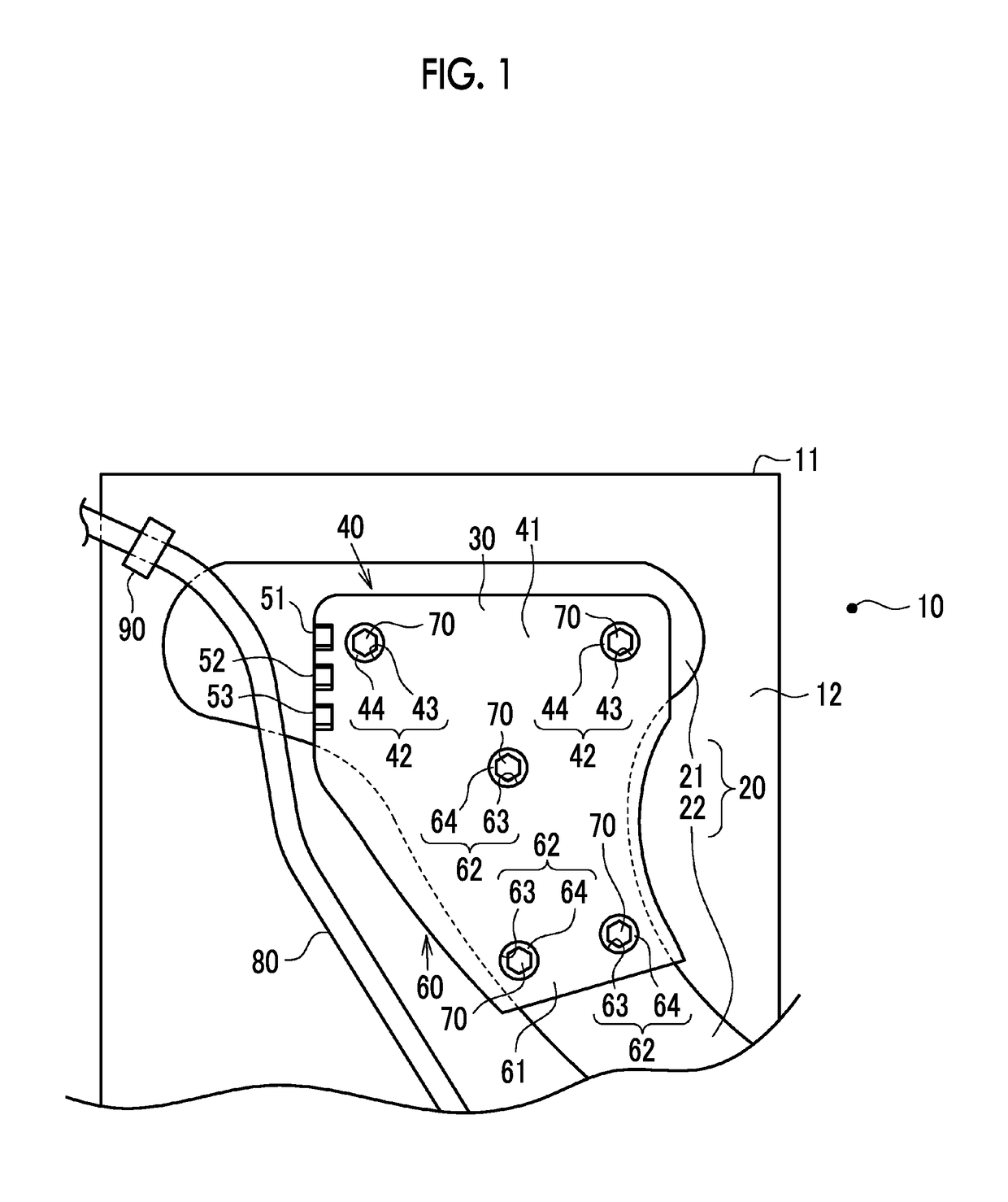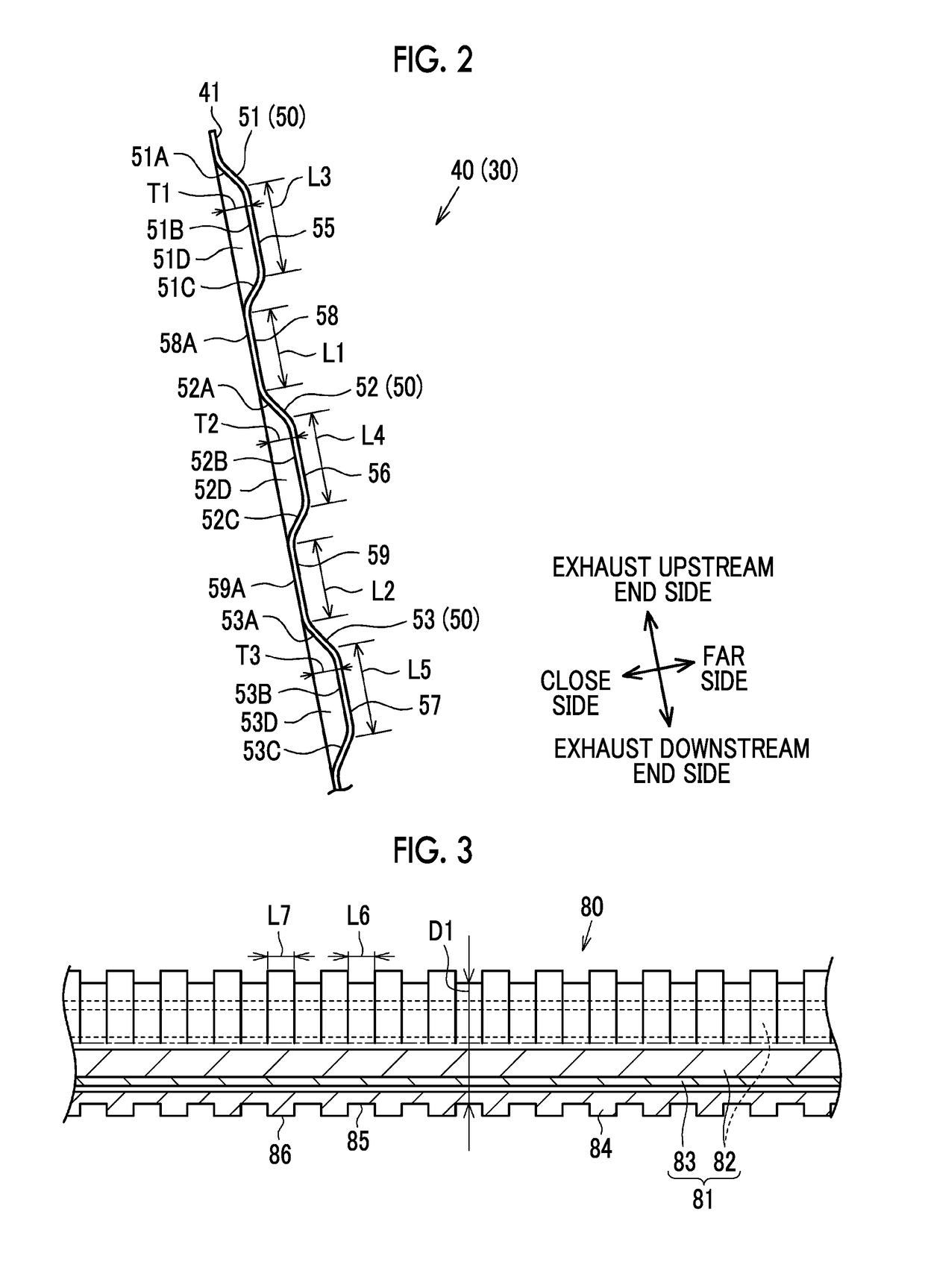Vehicle
a technology for vehicles and housing tubes, applied in the field of vehicles, can solve the problems of reducing the possibility of heat transfer from the exhaust manifold, affecting the operation of vehicles, so as to achieve the effect of suppressing damage to the accommodating tub
- Summary
- Abstract
- Description
- Claims
- Application Information
AI Technical Summary
Benefits of technology
Problems solved by technology
Method used
Image
Examples
first embodiment
[0020]a vehicle is described with reference to FIG. 1 to FIG. 4. As shown in FIG. 1, an internal combustion engine 11 is mounted in an engine compartment 10 of the vehicle. An exhaust manifold 20 as an exhaust component is connected to a cylinder head 12 of the internal combustion engine 11. Exhaust gas that is discharged from combustion chambers of the internal combustion engine 11 is introduced into the exhaust manifold 20 through exhaust ports (not shown) that are formed in the cylinder head 12. The exhaust manifold 20 includes a branch pipe portion 21 on the exhaust upstream side and a junction pipe portion 22 that is connected to the exhaust downstream side of the branch pipe portion 21. The branch pipe portion 21 is branched at an upstream end, and each of the branched ends is connected to a corresponding one of the exhaust ports. A heat insulator 30 is connected to the exhaust manifold 20.
[0021]The heat insulator 30 is formed of a metal plate material, and has a three-dimensi...
second embodiment
[0047] the following effects can be obtained in addition to the effect as described in above (1). (4) In the end edge of the heat insulator, the end edge being is located on the side of the wire harness 80, the inclined walls 151C, 152A, 152C, and 153A as the connecting feces that connect the outer end faces 158A and 159A of the recessed portions 158 and 159 with the distal end faces 155, 156, and 157 of the protruding, portions 150 extend in the plate thickness direction. In this embodiment, the lengths L11 and L12, in the perpendicular direction, of the outer end faces 158A and 159A of the recessed portions 158 and 159, and the lengths L13, L14, and L15, in the direction perpendicular to the plate thickness direction, of the distal end faces 155, 156, and 157 of the protruding portions 150 are shorter than the diameter D1 of the small-diameter portion 85 of the accommodating tube 84.
[0048]As shown in FIG. 6, in the end edge of the heat insulator 130, an interval A1 between the pro...
PUM
 Login to View More
Login to View More Abstract
Description
Claims
Application Information
 Login to View More
Login to View More - R&D
- Intellectual Property
- Life Sciences
- Materials
- Tech Scout
- Unparalleled Data Quality
- Higher Quality Content
- 60% Fewer Hallucinations
Browse by: Latest US Patents, China's latest patents, Technical Efficacy Thesaurus, Application Domain, Technology Topic, Popular Technical Reports.
© 2025 PatSnap. All rights reserved.Legal|Privacy policy|Modern Slavery Act Transparency Statement|Sitemap|About US| Contact US: help@patsnap.com



